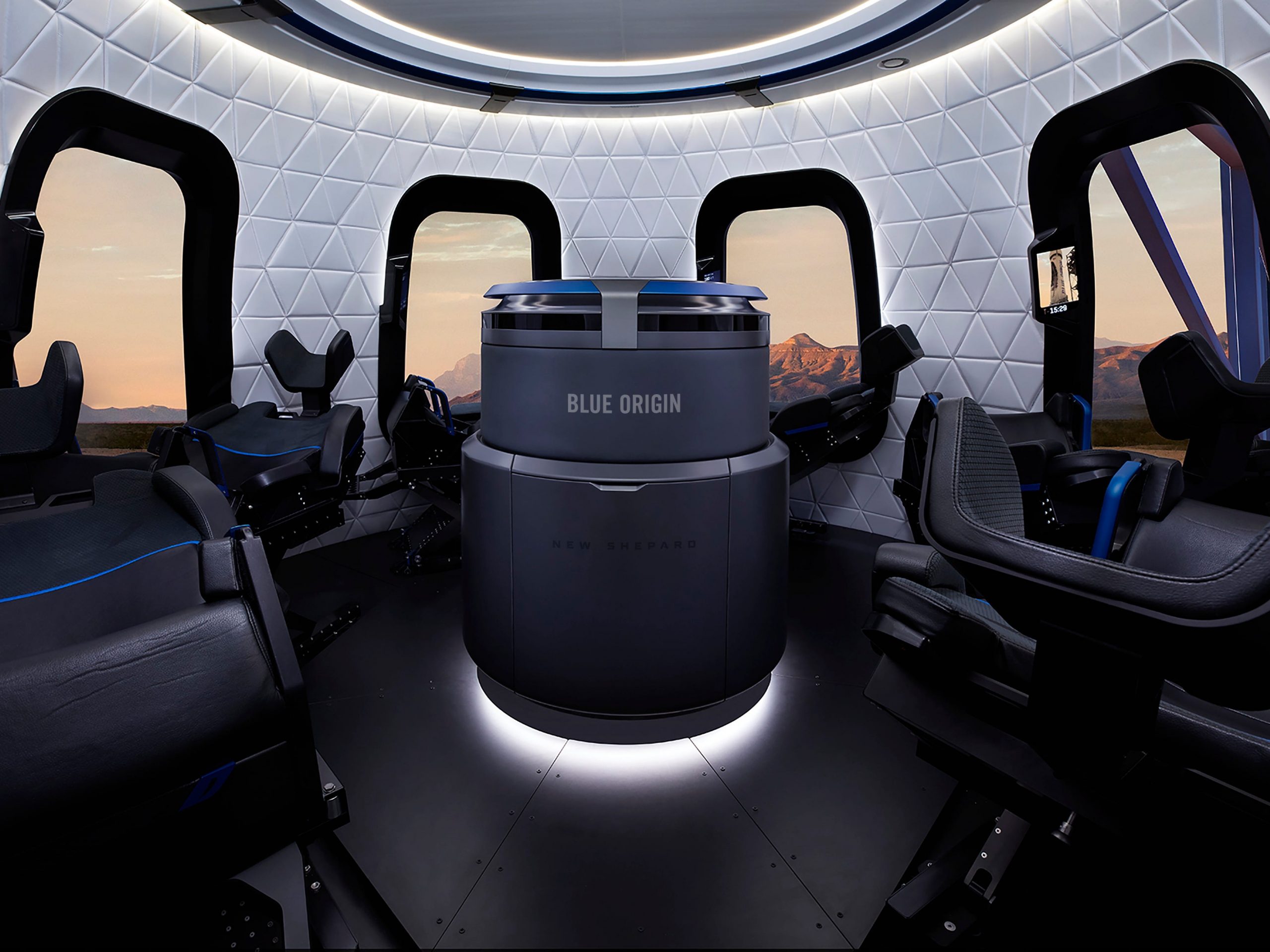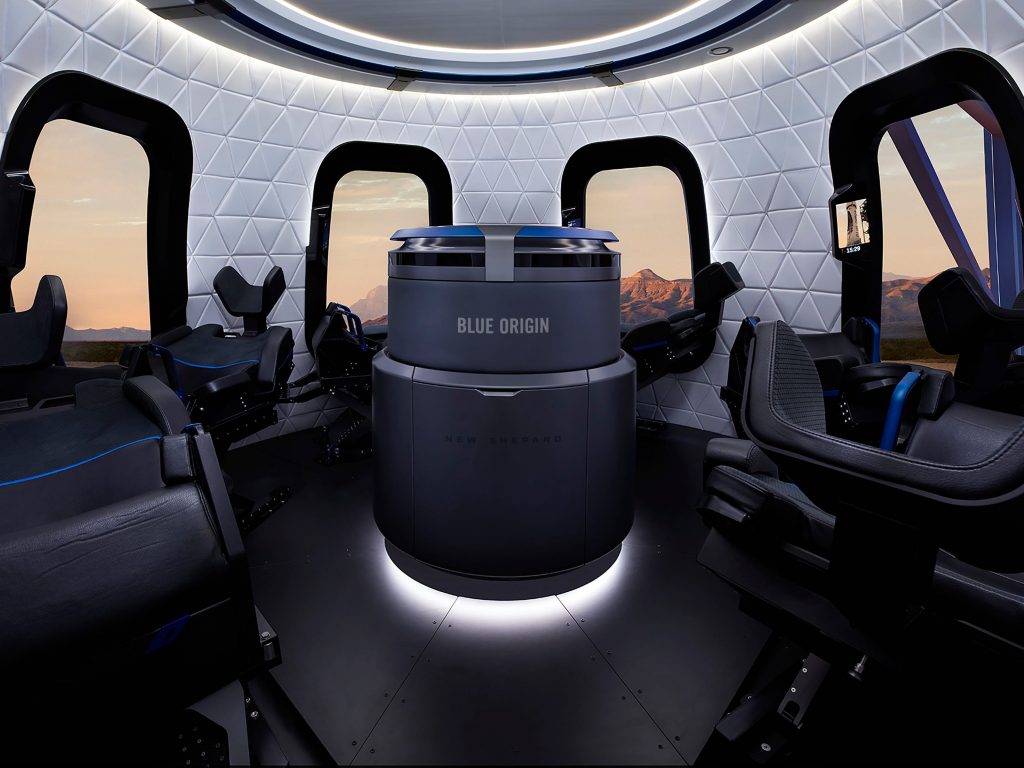
Blue Origin
- Billionaire Jeff Bezos traveled aboard a Blue Origin rocket to the edge of space last week.
- Rockets emit a large amount of heat, carbon dioxide, and other air pollutants into the atmosphere.
- Spaceships have very limited passenger capacity compared to standard commercial planes.
- Subscribe to our biweekly newsletter, Insider Sustainability.
When Jeff Bezos announced his flight to space last month, he said, "If you see the Earth from space, it changes you. It changes your relationship with this planet, with humanity."
For a long time, only astronauts could have this experience. But the Amazon billionaire has dreamed of it since he was a kid. On Tuesday, Bezos briefly entered suborbital space in a curiously shaped vehicle. His fellow billionaire Richard Branson, the founder of the Virgin Group of companies, also journeyed to the edge of space earlier this month on a Virgin Galactic flight. Next year, the billionaire Elon Musk plans to make the trip on one of Branson's spaceflights.
The cost to participate: millions. The carbon-pollution bill: to be determined. Instead of NASA's long list of qualifications and required experience, Blue Origin passengers train for 14 hours over two days. Virgin Galactic gives passengers three days of training and preparation.
For these billionaires, success would mean many more civilians taking similar pricey journeys for this rare view of Earth. But, with the limited passenger capacity for each flight and the environmental impacts from launch emissions (which could worsen extreme climate-related weather events), this burgeoning "space tourism" industry isn't sustainable.
The effects on humans of increased exposure to carbon dioxide can include a variety of health problems, including headaches, dizziness, difficulty breathing, fatigue, suffocation, and convulsions. Higher levels of nitrogen dioxide can impair a person's ability to breathe and increase their vulnerability to respiratory infections and asthma. Long-term exposure to nitrogen oxide can also cause chronic lung disease and reduce a person's sense of smell, according to the Australian government.
Uncertainty about total rocket emissions
There's been little disclosed about the total carbon footprint of these new spaceflights. This makes it difficult to determine the overall effect of rocket launches on the atmosphere, especially when companies like Virgin Galactic anticipate offering 400 spaceflights annually. But experts say emissions per passenger from a voyage with Branson's company are roughly equivalent to driving a typical car around the circumference of the Earth.
A potentially large problem
While the propellants used to launch Blue Origin's New Shepard, Virgin's VSS Unity, and SpaceX's Falcon rockets vary, the ignition and burning process often generate greenhouse gases, water vapor, and heat, according to the University College London associate professor Eloise Marais. While the number of space flights is small compared to long-haul commercial aviation, the difference in carbon dioxide is magnitudes higher. Instead of one to three tons of carbon dioxide emitted per passenger, a rocket carrying four or more passengers will produce 200 to 300 tons of carbon dioxide. "So it doesn't need to grow that much more to compete with other sources," Marais told The Guardian.
More environmental waste from the superrich
These spaceflights will join helicopters, private jets, and superyachts as modes of transportation with enormous carbon footprints. But operational rockets like the SpaceX Falcon Heavy already show that carbon dioxide emissions from commercial space launches are significantly higher. These are difficult to cancel out through carbon offsets or other individual choices, like going vegan.

